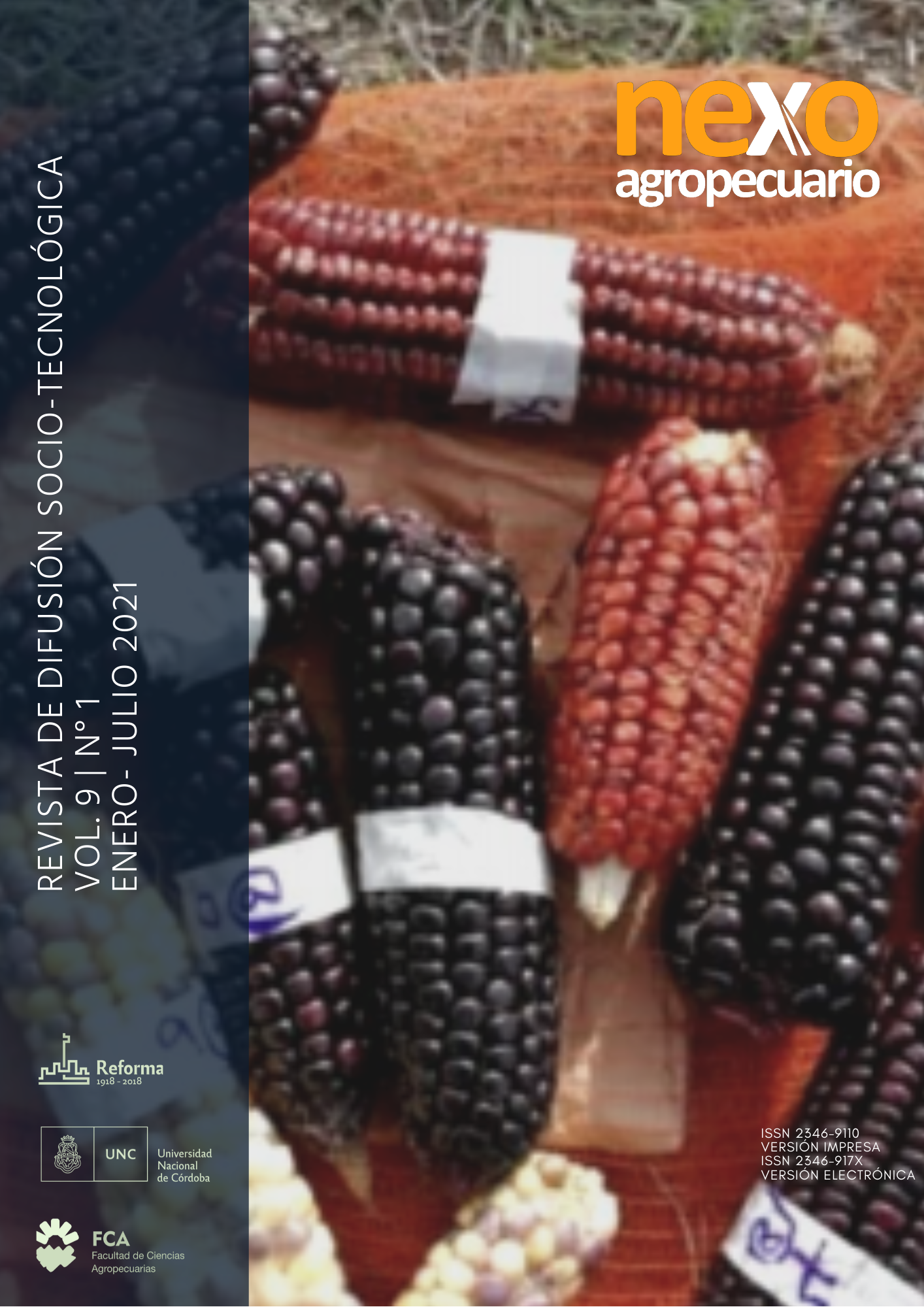CONSUMERS AND ACQUIRERS TRENDS IN PERCEPTION OF FOOD ADDITIVES
Keywords:
natural, synthetic, preference, consumption, knowledgeAbstract
A multiplicity of factors influences the perception of food by consumers and acquirers, knowledge or information being a key factor in their perception. Currently, most of the foods that we find on the market contain additives in their composition and are used with the aim of improving the characteristics of the food, whether they are organoleptic, processing or preservation. The Laboratorio de Tecnologia de Alimentos at Facultad de Ciencias Agropecuarias of the Universidad Nacional de Córdoba (LabTA-FCA-UNC) is dedicated to the task of evaluating the perception of consumers about additives by conducting surveys. The responses pointed out that consumers prefer foods with additives of natural origin instead of synthetic additives, this is because they perceive synthetics as more toxic. That is, they relate the natural with the healthy, and the synthetic with damage to health without having a criterion based on information in this regard. It is for this reason that the need to provide food education in order to improve knowledge in society becomes fundamental.
Downloads
References
Cáceres, J., & Cantarero, L. (2008). Culturas Alimentarias y Sociedad: Las prácticas de Compra y la Percepción de Riesgo Alimentario. Revista de Humanidades, 14(2008), 315--327. dialnet.unirioja.es/descarga/articulo/2793563.pdf
Carocho, M., Morales, P., & Ferreira, I. C. F. R. (2015). Natural food additives: Quo vadis? Trends in Food Science and Technology, 45(2), 284–295. https://doi.org/10.1016/j.tifs.2015.06.007
Duran, L. (2001). Aditivos naturales. Arbor, CLXVIII(661), 87–107.
Giannuzzi, L., & Molina Ortiz, S. (1995). Edulcorantes naturales y sintéticos: aplicaciones y aspectos toxicológicos. Acta Farm. Bonaerense, 14(2), 119–133.
Maluly, H. D. B., Johnston, C., Giglio, N. D., Schreiner, L. L., Roberts, A., & Abegaz, E. G. (2020). Low-and no-calorie sweeteners (LNCS): Critical evaluation of their safety and health risks. Food Science and Technology, 40(1), 1–10. https://doi.org/10.1590/fst.36818
Lupín, B., Lacaze, V., & Rodríguez, E. M. Masiero, S. (7–10 de julio de 2015). las percepciones de riesgo de los consumidores en alimentos lácteos: aplicación de una regresión logística ordinal. [Resumen de presentación de la conferencia]. Segunda convención de la Asociación Argentina de Alternativas en Psicología, Buenos Aires, Argentina. http://nulan.mdp.edu.ar/1287/1/01181.pdf
Olmedo, R. H., Nepote, V., & Grosso, N. R. (2013). Preservation of sensory and chemical properties in flavoured cheese prepared with cream cheese base using oregano and rosemary essential oils. LWT- Food Science and Technology, 53: 409-417 https://doi.org/10.1016/j.lwt.2013.04.007
Olmedo, R., Ribotta, P., & Grosso, N. R. (2019). Decrease of chemical and volatile oxidation indicators using oregano essential oil combined with BHT in sunflower oil under accelerated storage conditions. Journal of Food Science and Technology, 56(5), 2522–2535. https://doi.org/10.1007/s13197-019-03731-8
Volpi, E. L. (1985). Aditivos alimentares. Aliment. Nutr, 6(23), 40–42.
Xu, X., Liu, A., Hu, S., Ares, I., Martínez-Larrañaga, M. R., Wang, X., Martínez, M., Anadón, A., & Martínez, M. A. (2021). Synthetic phenolic antioxidants: Metabolism, hazards and mechanism of action. Food Chemistry, 353(March). https://doi.org/10.1016/j.foodchem.2021.129488
Yeung, R & Yee, W. (2002): "multi-dimensional analysis of consumer-perceived risk in chicken meat". Nutrition & Food Science, 32(6), 219-226
Downloads
Published
Issue
Section
License

This work is licensed under a Creative Commons Attribution-NonCommercial-ShareAlike 4.0 International License.
Aquellos autores/as que tengan publicaciones con esta revista, aceptan los términos siguientes:- Los autores/as conservarán sus derechos de autor y garantizarán a la revista el derecho de primera publicación de su obra, el cuál estará simultáneamente sujeto a la Licencia de reconocimiento de Creative Commons que permite a terceros compartir la obra siempre que se indique su autor y su primera publicación esta revista.
- Los autores/as podrán adoptar otros acuerdos de licencia no exclusiva de distribución de la versión de la obra publicada (p. ej.: depositarla en un archivo telemático institucional o publicarla en un volumen monográfico) siempre que se indique la publicación inicial en esta revista.
- Se permite y recomienda a los autores/as difundir su obra a través de Internet (p. ej.: en archivos telemáticos institucionales o en su página web) después del proceso de publicación del número de la revista, lo cual puede producir intercambios interesantes y aumentar las citas de la obra publicada. (Véase El efecto del acceso abierto).


